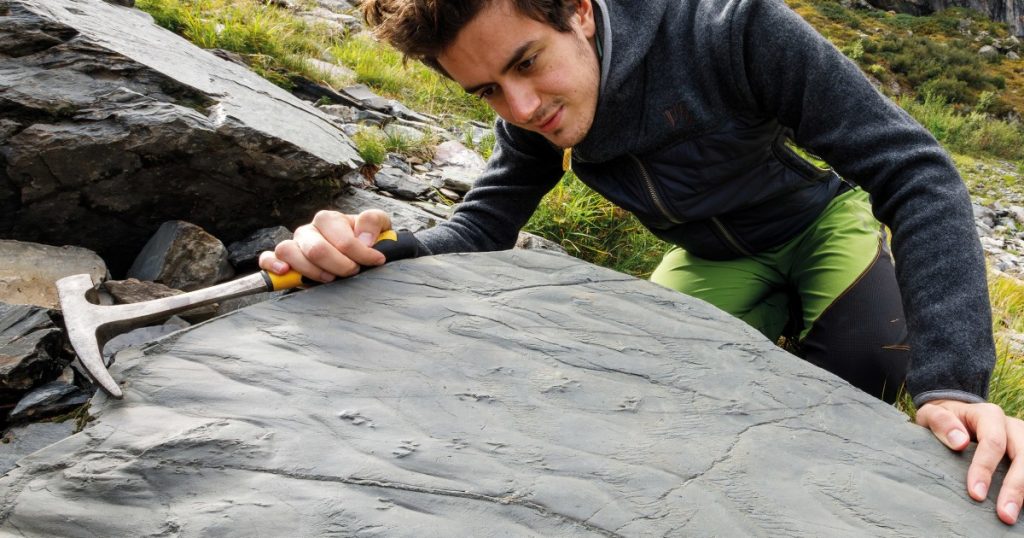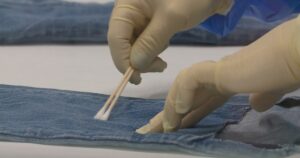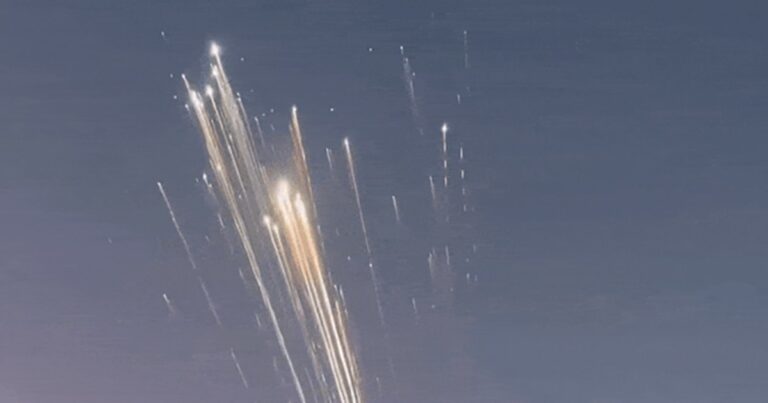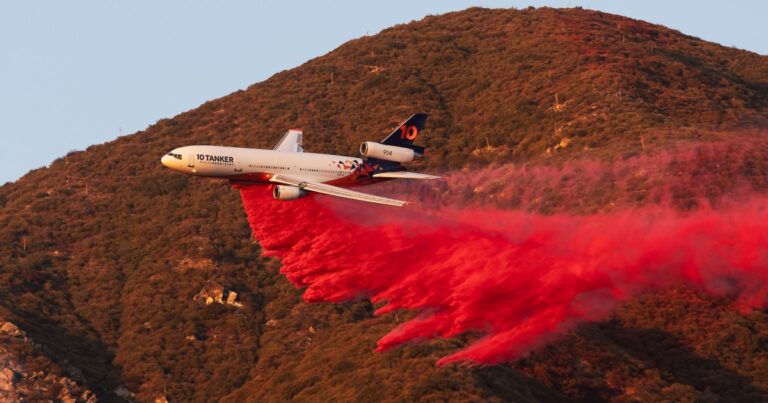Beneath the snowy slopes lay a prehistoric surprise: an ecosystem that predates the dinosaurs, revealed by melting snow before being stumbled upon by a hiker in the Italian Alps.
The discovery, made public Wednesday, includes well-preserved footprints of reptiles and amphibians that scientists say date back 280 million years to a geologic period known as the Permian period.
“Dinosaurs had not yet emerged at this time, but the animals responsible for the largest footprints here would still have been impressive, reaching up to 2-3 meters in length,” said Cristiano Dal Sasso, a paleontologist at the Natural History Museum in Milan, where the finds are now on display.
The fossils were discovered in the mountains of northern Italy’s Lombardy region after the snow and ice that once covered them melted away, scientists say, as a result of the ongoing climate crisis.

Claudia Steffensen was hiking along a trail in the Valtellina Orobie mountain range in the summer of 2023 when she stepped on a gray stone marked with unusual patterns.“My husband was in front of me, looking straight ahead, while I was looking toward my feet. I put my foot on a rock, which struck me as odd as it seemed more like a slab of cement. I then noticed these strange circular designs with wavy lines. I took a closer look and realized they were footprints,” Steffensen told the Guardian newspaper.
Intrigued, she snapped photos and shared them with her friend, Elio Della Ferrera, a nature photographer. Della Ferrera then contacted Dal Sasso, at the museum in Milan, to learn more about the discovery.
Dal Sasso enlisted the expertise of two specialists: Ausonio Ronchi, a professor of stratigraphy at the University of Pavia in Northern Italy, and Lorenzo Marchetti, a fossil expert from the Natural History Museum in Berlin.
Marchetti told NBC News on Friday that he was “amazed by the quality and quantity of the material,” and said that while he had studied other Permian sites in the area, none seemed as “rich” as this one.
The Permian period immediately predated the dinosaurs.
Ronchi said he was also “surprised by the abundance and preservation” of the fossils when he first saw the images.
“It is the first time we have seen such an amazing variety of vertebrate footprints, invertebrate tracks, imprints of flora, and other fossils,” he said in an email.
“These footprints were imprinted when the sandstones and clays were still wet,” Ronchi said. “The summer sun dried those surfaces so thoroughly that when water returned, the footprints weren’t washed away; rather, they were covered by new layers of clay that formed a protective coating.”
Continental fossils have previously been found in the Permian sediments of the Southern Alps, but none of this quality.

Starting in summer 2023, Della Ferrera and the research team conducted further inspections, photographing and mapping hundreds of fossilized traces across the mountain range, which rises to nearly 10,000 feet above sea level.The first fossils were airlifted out by helicopter last month.
As the fossils lie in the upper part of a mountain valley, which is covered by snow for most of the year, the discoveries are closely linked to climate change.
Ronchi explained that in recent years, rising temperatures have caused the ice to nearly disappear, leaving the debris where the fossils were found exposed.
“Last year’s ice is almost gone due to the rising temperatures, which uncovers the debris area where we found the fossils,” he said.
“Blocks of rock fall down from the steep walls of the reliefs as a consequence of cracking and erosion, so we expect to find many more tracks and fossils in the coming years,” Ronchi said.
The research team said that the fossils uncover trends strikingly similar to those we are witnessing today: an intensifying greenhouse effect, melting polar ice and changing ecosystems.
These environmental shifts contributed to the extinction of many species, which we may now encounter as fossils on a fortunate hike.
“The past has much to teach us about what we risk doing to the world today,” the researchers warned.













